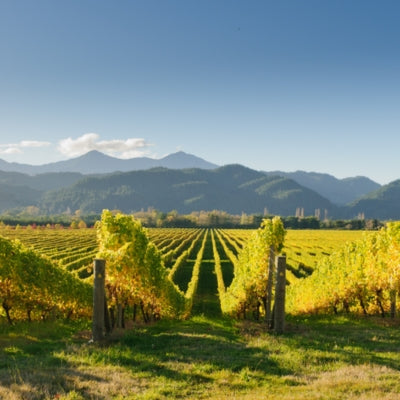
Rethinking terroir: myth, marketing, and modern practices
In the fifth and final part of our terroir series, Westgarth Wines specialist Maurizio Broggi explores the evolution of terroir, addressing its criticism and its transformative role in New World winemaking.
The concept of terroir, often hailed as the cornerstone of fine wine production, has been both revered and criticized. While many in the wine industry attribute the quality and uniqueness of certain wines to the specific characteristics of their terroirs, such as the chalky soils of Chablis or Champagne, others question its validity as a scientific determinant of wine quality. This article explores the criticisms of terroir, its historical perception in the New World, and how modern practices are reshaping the narrative.
Debating the science behind terroir
The idea that specific soil compositions directly influence the flavor of wine is a cornerstone of the terroir argument. Yet, critics highlight that this notion remains scientifically unproven. While vines require water and essential minerals, opponents argue that high-quality grapes can be produced in any soil type, provided those basic needs are met. This challenges the long-held belief that the soil itself imparts a unique fingerprint to a wine’s flavor.
Moreover, New World viticulturalists often suggest that modern vineyard techniques, such as drip irrigation, canopy management, and strategic vine training, can replicate the conditions associated with celebrated Old World terroirs. This perspective reduces the perceived supremacy of specific soil types, proposing instead that proper vineyard management is the true key to high-quality wine production.
Terroir as marketing or myth?
Another frequent criticism of terroir lies in its use as a marketing tool. For centuries, Old World producers, particularly in regions like Bordeaux, Chablis, and Chianti, have emphasized the uniqueness of their terroirs to differentiate their wines. This narrative has proven to be a compelling selling point, allowing these wines to command premium prices and maintain a competitive edge.
However, critics argue that terroir-based marketing often overshadows the roles of winemakers and growers in shaping wine quality. The expansion of famous terroirs – sometimes doubling or tripling their original size – since the mid-20th century has also raised questions about the authenticity of terroir as a determinant of wine quality. If the same designation now encompasses a much broader area, does the wine’s distinctiveness truly stem from the land, or is it a construct of tradition and branding?
The evolution of terroir in the New World
Historically, New World wine producers were dismissive of terroir, viewing it as a French invention to safeguard market dominance. The concept was seen as a way to diminish the role of human skill, placing undue emphasis on geography and tradition. This scepticism often led to the planting of inappropriate grape varieties and the selection of unsuitable vineyard sites as New World producers sought to emulate Old World styles without fully understanding the interplay of soil, climate, and topography.
The shift toward acceptance
Over time, New World producers began to recognize the value of terroir – not necessarily as a mystical concept, but as a framework for understanding and optimizing vineyard potential.
Advances in soil mapping and climatic analysis have allowed regions like California, Australia, and South America to identify ideal sites for specific grape varieties. The rise of single-vineyard wines and the establishment of regional designations further reflect this growing appreciation for terroir.
Modern practices: A balanced approach to terroir
One of the most significant outcomes of terroir’s evolution in the New World is the shift toward less interventionist winemaking practices. Overripe grapes, excessive oak aging, and heavy extraction techniques – once hallmarks of New World styles – are increasingly viewed as barriers to expressing a vineyard’s unique characteristics.
Instead, many New World winemakers now prioritize balance and restraint, allowing the natural qualities of the vineyard to shine through. This approach not only underscores the importance of terroir but also promotes greater diversity in wine styles, moving away from the homogenized profiles that once defined the New World.
Terroir in context
The debate over terroir is far from settled. While its scientific basis may remain inconclusive, its role as a cultural and marketing phenomenon is undeniable. For New World producers, embracing terroir represents a dual opportunity: to highlight their wines' distinctiveness and to refine vineyard and winemaking practices.
Ultimately, whether terroir is seen as science, myth, or marketing, its influence continues to shape the global wine industry in profound ways.
Want to read more? Take a look at some of our other blogs:
Also in News



